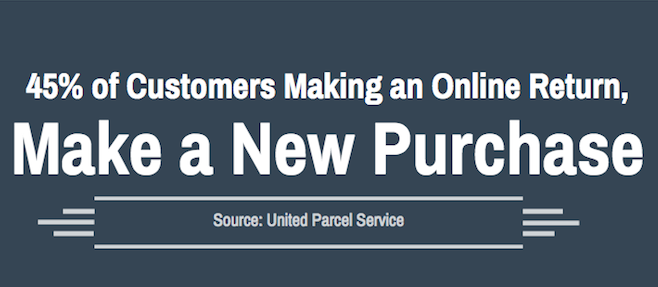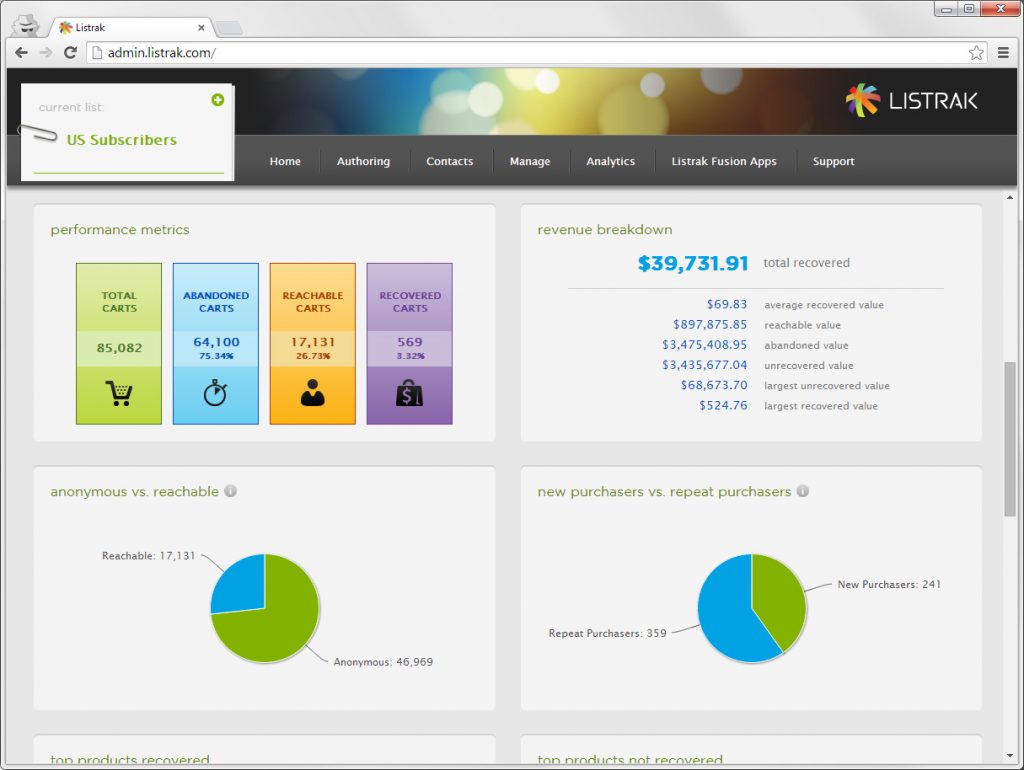8 Ways the Holidays Will Be Different in 2017
As retail transforms, the 2017 ecommerce holiday season stands to encapsulate several themes in the industry’s evolution. We can imagine this time in the spirit of alchemy–the holidays are when retailers can condense their best practices into gold.
Here’s our forecast for how the 2017 holidays will be different from years past, as well as guidelines to capitalize on the sales opportunity.
Related: Shopify Apps for Increasing Traffic
1. Holiday Season is Now Longer Than Ever

We’re starting with this, not to stir panic, but to share the big picture from the onset. As Shopify emphasizes in their #BFCMwin (Black Friday Cyber Monday) campaign, the holiday shopping season has grown longer. According to AdRoll, and the National Retail Federation, 40% of shoppers start looking for gifts in October.
After the early lead in shopping, several other key dates come up. Yes, Black Friday and Cyber Monday still lead the pack in sales. However, as retailers offer incentives earlier to entice the good planners among us, Black Friday is transitioning into Grey November.
In thinking of the holidays, we want to see retailers have a strategy that covers the months from October through January, rather than just a few weeks around Christmas.
2. New Dates Gain Momentum and Importance
During the traditional high season, from Thanksgiving to Christmas, there are a couple of other emerging dates. Yet the biggest surprise of 2017 will be the growing importance of two dates after Christmas. Here’s the line-up:
Monday, December 11, 2017: Green Monday.
About ten years ago, eBay christened the second Monday of December as “Green Monday.” No one knows why it’s called this, but the thinking is it’s for all the green cash that comes flowing in.
It’s easy to see how this came about; Christmas is getting closer, and shoppers just spent the weekend making their plans. People then put them into full effect with purchases on this second Monday. Today several mega online retailers, like Wal-Mart, offer sales in celebration. It’s the biggest online sales day in December.
Friday, December 15, 2017: Free Shipping Day
Free Shipping Day is also about a decade old. It sprung from the thinking that this is the last day retailers can send a gift via standard shipping and guarantee its arrival by Christmas Eve. In 2016, over 1200 merchants offered free shipping on this day. Much like the deals on Green Monday, when shoppers see Free Shipping Day from so many online retailers, they expect it from every outlet.
Tuesday, December 26, 2017: Boxing Day
Boxing Day has long been the Black Friday equivalent for merchants in the UK, Australia, and Canada. But increasingly, U.S.-based retailers can build upon it, too.
Here’s why: As American families gather for the days around Christmas, and everyone has his or her own device, we spend time scrollin’ side-by-side. Sound familiar? Lots of customers have eyes on their favorite online stores, especially if they have a gift card burning in their pocket. Even if an American retailer doesn’t feel authentic in declaring a Boxing Day sale, we believe it’s an emerging trend is to offer fresh incentives in the spirit of the day after Christmas.
Thursday, January 4, 2018: National Returns Day
Brought to us by the United Parcel Service (UPS). On last year’s National Returns Day, January 5, 2017, UPS delivered 1.3 million returned packages to retailers. Now that’s a depressing number. But how can we turn this around? The truth is, as customers plan their returns, they are back online and in the store. Which brings us to our next point…
3. Returns Offer New Sales Opportunity

In the same UPS release that declared National Returns Day, the company offered news of an opportunity, too. According to their study, “70% of online shoppers made an additional purchase when they returned an item to a store and 45% made an additional purchase when processing their return on the retailer’s website.”
Since nearly half of all online shoppers place a new order with a return, the weeks following the holidays are a crucial time for customer engagement and sales. January is no longer a retail write-off; it’s an important time to promote all products through techniques like cross-selling and upselling.
Another piece of good news is that online retailers are improving their customer service when it comes to returns. As UPS described it, “Between 2012 and 2016, consumers consistently reported fewer issues paying for returns shipping (decreasing from 66% to 50%), paying restocking fees (decreasing from 43% to 27%), and experiencing a delay in receiving credits or refunds (decreasing from 41% to 27%).”
Returns are not an easy road for any retailer to navigate, and we cheer on merchants who are improving their systems year after year. Congratulations, it is paying off!
4. Free Shipping Becomes the Norm

According to “The Ecommerce Holiday Handbook,” published last month by Nosto, “Customers don’t consider free shipping to be a promotion. In fact, it’s fast becoming the standard, with 38% of holiday shoppers saying they will only shop at sites offering it (only 16% say they don’t consider it as a factor when selecting who to buy from).”
This isn’t easy news. Yet it doesn’t have to be all bad. Let’s revisit our article, How to Boost Average Order Values. One compelling way to encourage shoppers to add more to their carts is to set a minimum purchase for free shipping á la “Free Shipping for Orders Over $75.”
Retailers will want to spend time calculating the threshold that works best for their inventory. Loosely speaking, a good, round estimate for setting the minimum is 30% higher than the amount you plan to sell. Then, by securing 30% more sales in an order, the extra purchases cover the cost of shipping the entire order free to the customer.
5. Sell More with Wish Lists for All

We like what Stella & Dot did here. By creating a wish list for a range of women in a customer’s life, they made their store the “to go” for this customer to get many gifts in one swoop. We want merchants to think about their online stores as holiday workspaces for their shoppers. Meaning: allow customers to save multiple wish lists to represent the various people on their list. We believe that Stella & Dot offered this wish list as a printable PDF, but are apps that can create this kind of list, or we can build this functionality into a store.
Also allow for wish lists to be shared, so groups of people can see what one another is planning for others. Additionally, keep in mind that some customers may use their shopping carts as a wish list. As we discussed in our recent article about Shopify Apps to Increase Sales, be sure to give customers the option to share their carts, too.
Anthropologie had a fun, creative take on this during a recent holiday season. Take a look at what they invited their customers to do. “Hint, hint!”

6. Better Understanding Leads to Stronger Sales
Over the holidays, online retailers can shine using sales techniques that they’ve honed year around. With this in mind, the blueprint for successful customer relationships lies in stores knowing their customers. There are numerous programs and apps that allow online retailers track their shoppers–not with the goal of being hawkish; but rather, of being helpful.

Customers increasingly want the help. As eMarketer reported over the summer, “…millennials ages 25 to 34 were three times more likely than respondents 65 and older to share personal information with their favorite retailer.”
They do this to experience real benefits when retailers get to know them less anonymously and more personally. With specific customer information, retailers can offer more targeted product recommendations, for example. Many shoppers want this personalized relationship with their favorite stores.
Also, as we shared in our interview with Chris Geiss, the founder of Seguno Software, with better understanding of their customers, retailers can reinvent their discounting strategy. For instance, it’s long been a retail staple to offer “XX % Off” the entire store.
Now though, as merchants can see who is a new customer and who is returning, for example, they can discount in the most appealing way for each customer. The new customer might be incentivized to buy with a free shipping offer. The returning customer, on the other hand, might buy when she sees 30% off a scarf that would look great with the coat she recently bought. Customer knowledge makes this personalization possible–and builds sales.
7. Email Continues to Close the Deal

Dotmailer, an email automation tool, advocates for email promotions during the holidays. But it’s not out of bias; they’ve got the numbers to prove it. According to the company, “email delivers $42 for every $1 spent” at the holidays. (They also write, “54% of consumers now open their emails on mobile.” More on mobile below.)
They encourage retailers to start emailing customers as early as October to get in front of them as they begin to shop for the holidays. These emails can feature a “sneak peak” at holiday ideas or exclusive deals for loyal customers, for instance.
The success of any email campaigns rests in a retailer’s knowledge of her customers. To illustrate, Dotmailer also reports that, “according to the UK Direct Marketing Association, 84% of consumers found less than half of the emails they received to be irrelevant and uninteresting.” But it doesn’t have to be this way.
In the days before the holiday shopping buzz, take a good look at your email list. What are the categories your customers fall into? What are the specific messages for each category? For example, it’s smart to have one email campaign for customers who haven’t purchased since last year and a different one for customers who buy on a monthly basis.
We also like retail expert Sean Wilkins’ suggestions for anticipating customer needs. As he described in his interview with eMarketer, “If a customer bought infant clothing last year, it’s reasonable to assume that child has grown, and now they’re interested in clothing and toys for toddlers. Being able to anticipate that, get ahead of that, and cater to that need without the customer asking for it is key.”
8. Mobile is a Key Holiday Driver

To tie it all together, all of these trends apply to shoppers’ increased use of mobile devices. In 2016, shoppers spent over $1 Billion on mobile purchases on Black Friday alone. (Yes, it was a record!)
AdRoll reported in “Retail’s Ultimate Guide to Holiday Planning” that, in 2016, “mobile accounted for 50.3% of all e-commerce traffic, surpassing desktop traffic for the first time ever. Knowing this, it shouldn’t be a surprise that 38% of shoppers now say they will not return to a retailer’s website if it’s not mobile optimized.” Other industry experts estimate that customers will complete 35% of their holiday purchases on a phone or tablet this year.
For many retailers, the months of November and December can account for as much as 30% of their yearly revenue. We can’t encourage it enough to have your store ready for mobile customers–and especially for converting sales via mobile payments.
Are you ready for the 2017 ecommerce holiday season? We sure are. We want to help retailers take advantage of this fast-paced, high-volume time of year. If you need last minute expertise on how to optimize your store for Holiday 2017, let us know.
